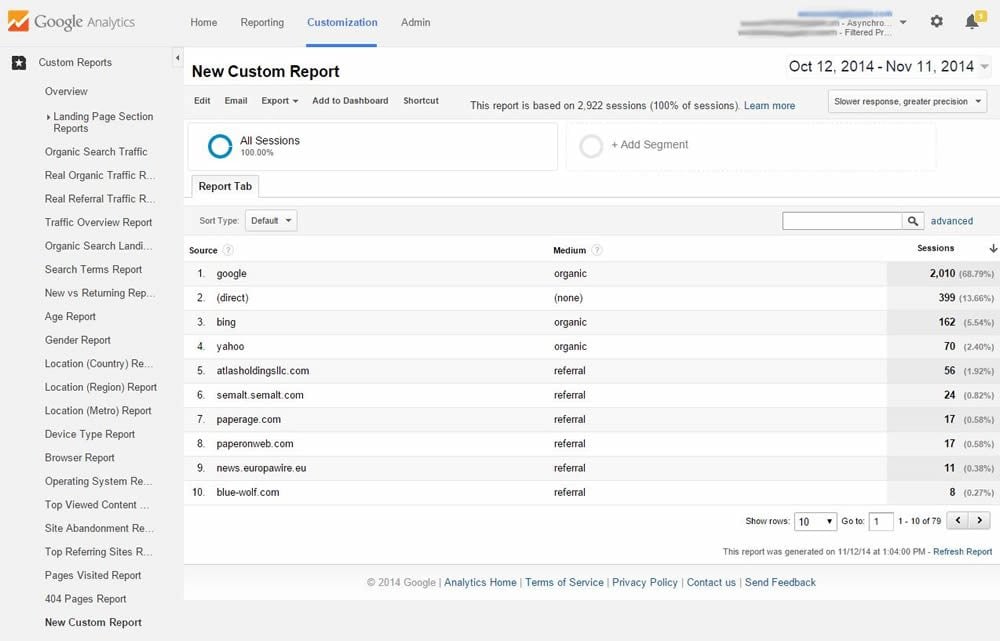Enhance Your Reporting with Secondary Dimension in Google Analytics
Enhance Your Reporting with Secondary Dimension in Google Analytics
Blog Article
Transform Your Analytics Approach With Additional Measurement in Google Analytics
By incorporating additional measurements into information evaluation, a brand-new layer of insights arises, losing light on intricate user behaviors and communications. The critical application of additional dimensions holds the vital to unlocking a treasure chest of very useful information that can change exactly how services act and analyze upon their information.
Recognizing Second Measurements in Google Analytics
Secondary measurements in Google Analytics give extra context to main data by enabling customers to evaluate metrics across a second dimension, supplying much deeper understandings into customer actions and interactions on a site. Secondary Dimension in Google Analytics. While main dimensions give essential data points such as pageviews, bounce price, and session period, secondary dimensions provide a more detailed view by segmenting the primary information even more. This division permits individuals to evaluate metrics in mix with one more dimension, such as website traffic sources, demographics, or user habits
Advantages of Making Use Of Second Measurements
Utilizing additional measurements in Google Analytics uses a strategic benefit by improving the deepness of evaluation and giving an extra extensive understanding of individual interactions and actions on a site. By incorporating second dimensions, experts can gain important insights into the performance of particular sectors or variables within their information. This allows an extra thorough exam of customer actions beyond surface-level metrics, enabling a much deeper exploration of the aspects influencing individual engagement and conversions.

How to Apply Additional Measurements
When including secondary dimensions in Google Analytics, one necessary action is to pick the appropriate metrics and measurements to improve the analysis procedure. Clicking on this button will certainly open up a drop-down menu listing various dimensions that can be added to your main dimension for much deeper insights.
After picking the suitable secondary dimension, such as 'Source/Medium' or 'Tool Classification,' Google Analytics will display the data in a much more thorough format, allowing you to cross-analyze different elements of customer actions. Remember to explore various mixes of key and second dimensions to uncover important patterns and patterns that can notify your advertising and marketing approaches. By implementing secondary dimensions thoughtfully, you can obtain an extra thorough understanding of your website or app performance and make data-driven choices to optimize your digital presence.
Analyzing Information With Second Measurements
Boost your information analysis in Google Analytics by incorporating secondary measurements to dig deeper right into customer habits patterns and optimize your electronic advertising and marketing methods efficiently - Secondary Dimension in Google Analytics. By adding second dimensions to your primary information, you can get important understandings that can assist you make informed choices regarding your site or application performance
Evaluating information with additional measurements enables you to segment your key information additionally, providing an extra extensive sight of user communications. As an example, integrating the key dimension of 'source/medium' with a secondary dimension like 'touchdown web page' can reveal which specific pages are driving web traffic from different resources. This information can be instrumental in fine-tuning your web content method or enhancing your marketing campaign to enhance conversions.
Moreover, web using additional measurements allows you to identify relationships between various metrics, assisting you recognize the impact of numerous elements on user actions. Whether it's assessing demographics together with individual involvement metrics or tool classifications with conversion rates, additional measurements encourage you to uncover covert patterns and patterns that can lead your marketing efforts.
Enhancing Performance With Additional Measurements
To boost the performance of information analysis and decision-making in Google Analytics, incorporating secondary dimensions is essential to enhancing performance metrics and getting much deeper understandings right into individual habits patterns. By making use of second measurements, experts can dig past surface-level information and discover useful relationships that might otherwise go undetected. This optimization strategy enables services to tailor their advertising initiatives extra successfully, recognize areas for enhancement in site usability, and enhance overall user experience.
Secondary dimensions supply an even more thorough sight of customer communications by offering extra context to main information metrics. Combining the main dimension of 'landing page' with a second measurement like 'gadget classification' can expose whether specific devices are much more likely to drive involvement on details touchdown web pages. This insight can inform receptive design improvements or targeted advertising and marketing strategies to enhance efficiency.

Final Thought
Finally, the combination of additional dimensions in Google Analytics offers organizations with an effective tool to boost their analytics approach. Secondary Dimension in Google Analytics. By delving deeper into user habits and interactions, online marketers can reveal useful insights that can drive efficiency optimization and enhance the overall customer experience. Leveraging additional measurements permits for a much more extensive evaluation of data, leading to even more informed decision-making and customized advertising initiatives
Secondary measurements in Google Analytics provide extra context to primary data by permitting users to assess metrics across a 2nd measurement, providing much deeper insights right into user news habits and communications on a web site. While key dimensions give fundamental information factors such as pageviews, bounce rate, and session period, additional measurements offer a more in-depth view by segmenting the key information further.One of the crucial advantages Related Site of using additional measurements is the capacity to uncover connections and patterns that might not be instantly evident when assessing data with primary dimensions alone.When integrating second measurements in Google Analytics, one important step is to choose the pertinent metrics and dimensions to enrich the analysis process. Matching the main measurement of 'touchdown web page' with a secondary dimension like 'device category' can expose whether specific gadgets are a lot more most likely to drive involvement on details touchdown web pages.
Report this page